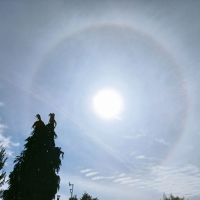G8JNJ
About
- Username
- G8JNJ
- Joined
- Visits
- 4,662
- Last Active
- Roles
- Member
- Points
- 130
Reactions
-
Digital signal / 40mtr Ham band?
-
LZ1AQ Active Amp and a "Fat" Lazy loop - Dual Opposing Loops.
-
Trying to understand this noise
Don't buy the Bonito loop.
Have a look at the Loop Antennas IO group.
https://groups.io/g/loopantennas
You will find some familiar names on there, and one or two, are offering ready built loop amplifier PCB's based on Wellbrook and LZ1AQ's designs.
My personal favourites are versions of the LZ1AQ loop amplifier. But for a bit more money, you could buy a much more versatile ready built LZ1AQ active antenna amplifier, that facilitates both switched active loop and dipole modes. This is highly effective and still costs a fraction of the Bonito (which is based around a cheap video amplifier chip).
Chavdar's other webpages are a goldmine of information and highly recommended too.
https://www.lz1aq.signacor.com/docs/lz1aq-topical-article-index.php
I hope this provides some alternative options.
Martin
-
URL string commands
-
New product accessories in our store: SDR protection circuit, MW filter
You only need sufficient attenuation to take the strongest broadcast stations down by just enough to prevent ADC overloads from occurring. I generally try to keep all signals across the 0-30MHz spectrum below -30dB.
If you have an existing band stop filter, with too much attenuation, you can connect a 1K ohm variable resistor between the input and output of the filter, and then adjust the value until you have enough attenuation to prevent overload occurring at night, but still allow some signals to pass through at a usable level.
Even on a receive site where I had strong signals from local medium wave transmitters, I've not had to introduce more than 20dB of band reject filtering to fix the problem. In most cases, a simple 10dB slope frequency / amplitude equaliser provides a good compromise.
This and other techniques have been discussed in many previous threads, so it's worth searching for those.
Regards,
Martin





